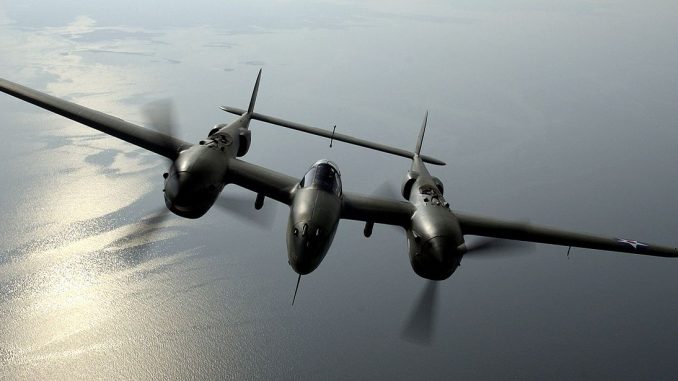
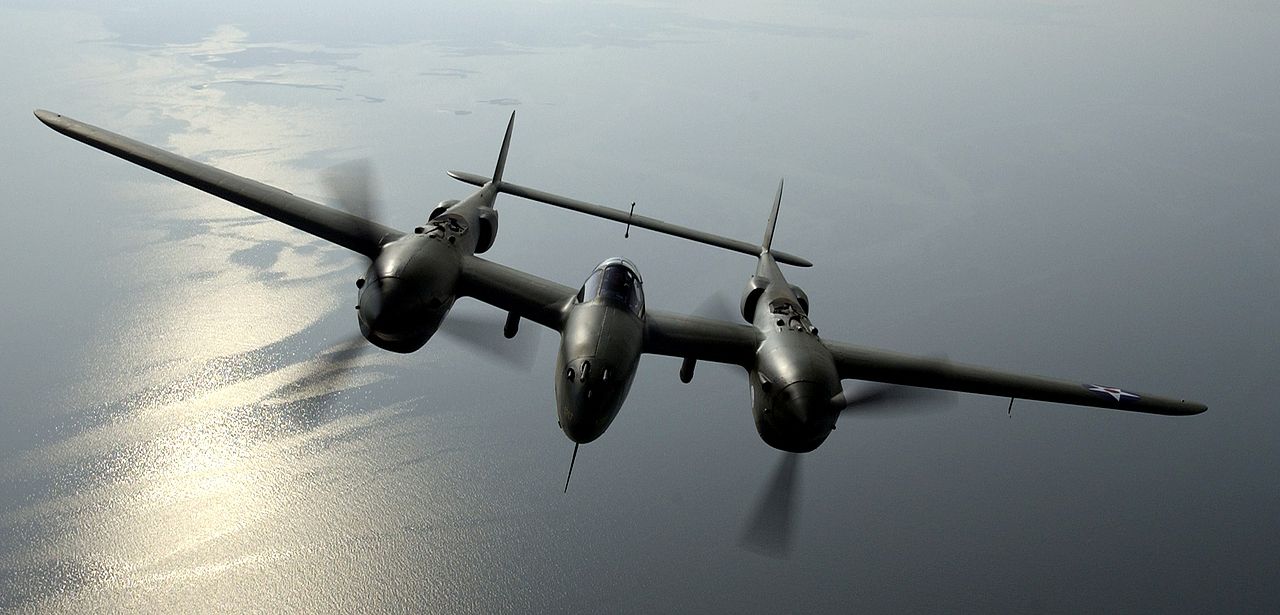
Ever dreamed of salvaging a WWII warbird from the wilderness? Well, now is your opportunity to take part! Ken McBride is looking for a few capable hands willing to help out on his trek to the Arctic this summer. They are planning to recover one of the Lockheed P-38 Lightnings trapped in the glacial ice below. The Lightning is one from the same group of six P-38’s and two B-17s which got stranded on the ice in Greenland during a WWII ferry operation. As most readers will be aware, a previous team recovered one of these P-38s back in the late 80s, and restored her to flight. We all know that aircraft as Glacier Girl now. It’s long been many a person’s dream to go back for the others, and this summer that’s exactly what will be happening. YOU could be a part of that mission!
Ken McBride has already organized several trips to the Greenland in previous years to prepare for this venture, and to chart the current locations of the aircraft, as the glacier has continued to move them closer to the sea. They have managed to locate one of the P-38s, and the focus of this summer’s mission will be to recover that aircraft, with the possibility of going back for the others in future years. McBride has been planning this operation for some five years, and has discussed the project at length with all of the major players in the previous salvage effort. His team will be using similar techniques to bore down to the Lightning and disassemble it for recovery.

While this mission does not depend upon it, McBride is also seeking additional sponsorship to help defray costs, if any interested parties are willing to join him. He is also looking for a couple of rugged and capable volunteers to join the team. Perhaps you have what the mission needs. Here is what Ken McBride is currently looking for from his volunteers
1: We need at least one and ideally two more guys to help out with the Antonov AN-2 in the Seneca Falls area (Finger Lakes) of upstate New York from May 12th thru May 22nd. The only qualifications required is a willingness to help, although some mechanical ability would be beneficial. If someone were relatively local, I could pay for some transportation costs and meals will be provided. This is obviously quite urgent.
2: We could use probably two more guys on the icecap from approximately June 8th to perhaps the middle of August. We’re looking for guys that can do 3 to 4 week commitments, however if someone can pay for their own travel costs, one to two weeks would probably be workable. However there is some risk of being stuck on the icecap until the weather clears. We are flying strictly VFR. Weather can cancel flying for 4 to 6 days; possibly more. The base of operations up there is the Kulusuk Airport. It’s about 90 miles from there to the icecap.
3: Qualifications for working on the icecap: – general mechanical and/or electrical knowledge/abilities, cold weather prepared, strong work ethic, acceptance of basic/rough conditions with ‘less than gourmet’ food.
If you feel you have what it takes, and can afford the time to dedicate fully to this trip, Ken can be reached by e-mail at: GreenlandP38@gmail.com Please be respectful of his time though, and only contact him if making a serious bid!
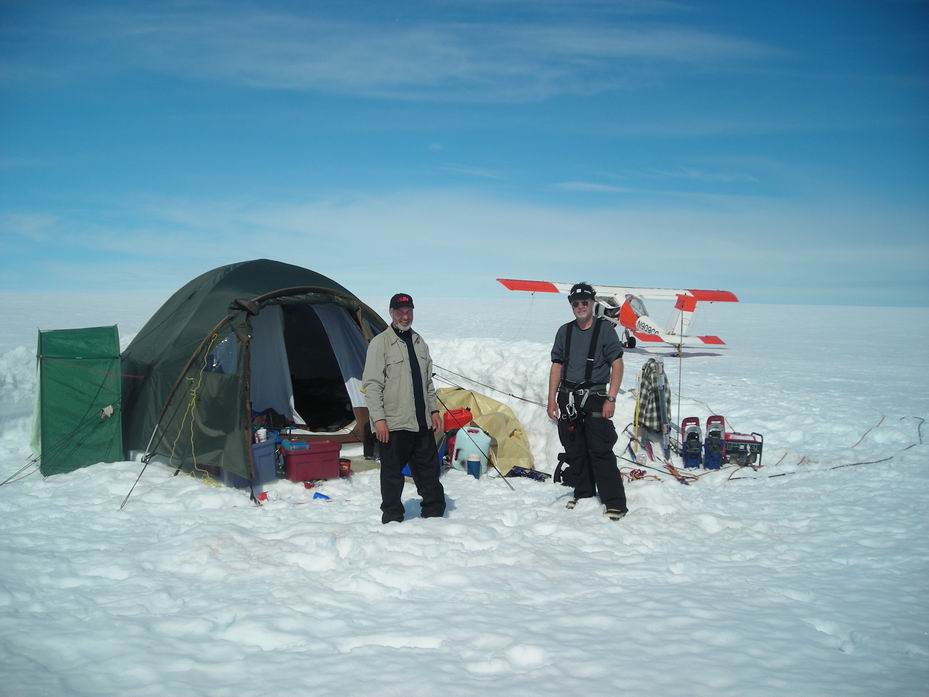
For those interested in knowing what it’s like at the Arctic site, here’s what McBride told WarbirdsNews about his first trip out in 2011.
————————
“We received our initiation to the Greenland icecap! We camped on the glacier for nearly two weeks, with several days of continuous day and night freezing rain, winds to and probably beyond 50 mph, and a crevasse that appeared after the first week heading directly behind our camp! There were many other days of drizzle, fog and white out conditions. Weather was a major challenge.
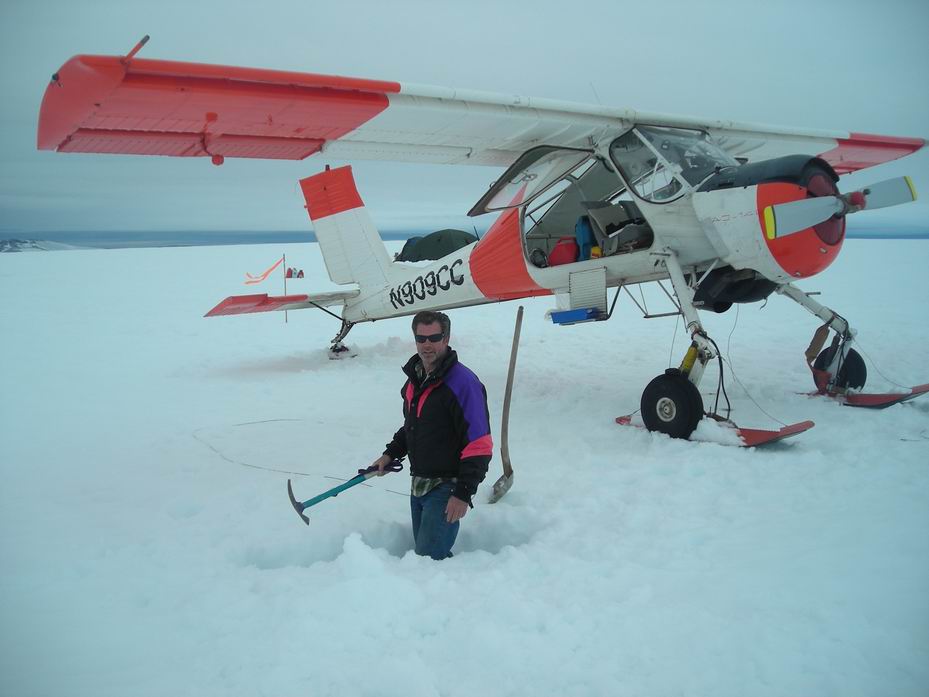
We buried anchor rods in the snow with cables to the wilga and it did ok. Many hours spent building a 6′ high snow wall around the tent, which needed daily upkeep.
We did get a couple afternoon/evenings and two good full days to run the [ground penetrating] radar, and we are quite sure we located one of the P38’s…..
It is likely the main group including two B17’s and three P38’s are in the crevasse field at this point. We ran the radar in a large grid adjacent to the crevasse area and found nothing. With the one find, and few good flying days, we opted to load up the Wilga and head back to Kulusuk.
As it turns out, we happened to be out on the icecap in the worst storm in the past two months. The airport in Kulusuk was closed for a couple days, commercial flights cancelled, and winds blew over a small sea container! Weather is obviously a major factor in this part of the world, and will dictate what can be done and when. Nothing can be done here to pre-set schedules.
In good weather, as it was the last couple days, the icecap is spectacular.”
———————————-
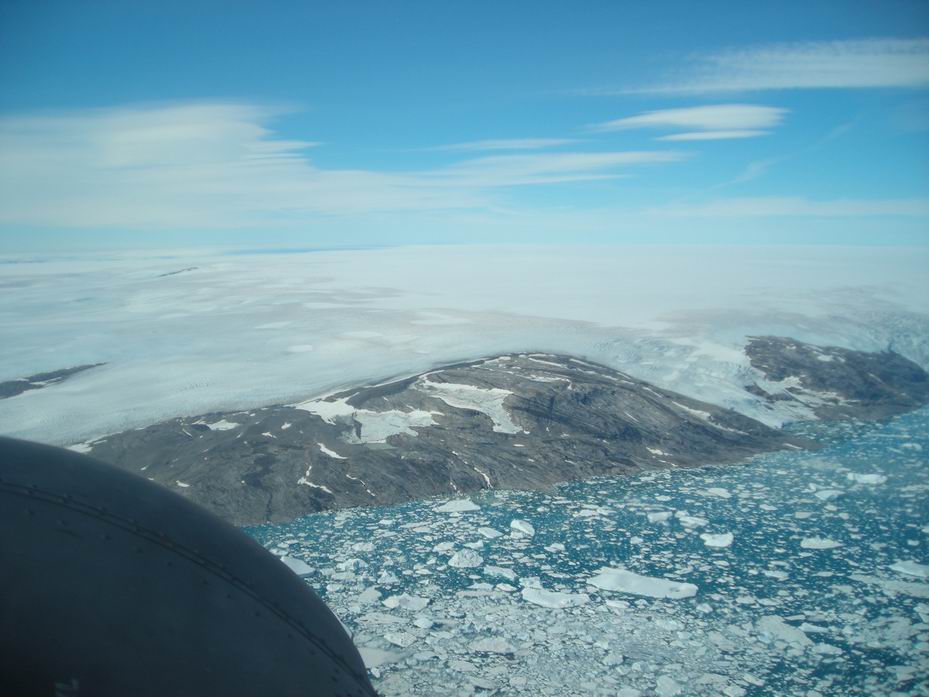
Make no mistake, this trip is not for the faint-hearted, and there certainly is some risk to life and limb involved, but it will be an adventure of a lifetime, and one you’ll never forget!



Thank You For The Rescue!!!!!
Long Live Old Iron
I discussed the up coming trip with Stan Bloyer prior to his trip West . I have sincere interest in being part of the recovery . You can reach me at 321 914 2732 .
Regards , Tim
Tim, you can contact Ken McBride directly using the e-mail address listed in the article. Let us know how it goes!
This post must be older then the date listed, as Stan Bloyer passed away more then 2 years ago. I was lucky enough to have met Stan on a number of occasions while he was flying a now defunct CAF squadron’s aircraft. This cat could and did fly everything and would have been a great addition to your recovery team.
Amazing story….. Good luck guys! Can’t wait to see you what happens!
Two of my friends were among the on-site rescuers In 1942. The “Lost Squadron’s” 8 planes were on the surface centered at about 65*19.2’N, 40*14′ W. in 1942. I am curious about their present location, and how deeply they are now buried.
CAPT Don Taub, USCG Retired
I accidently made an error in the Lost Squadron’s 1942 location above. That was the location of what was called Ice Cap Station.
The location of the 8-planes in 1942 was marked as centered at about 65*18.8’N, 40*01’W.
CAPT Don Taub, USCG, Retired
They either have more money than sense, or they just plain got rocks in their head. When initially recovered, ‘Glacier Girl’ looked more like a pancake than a P-38, and there is a large part of me who still feels that the restoration was more of a face-saving measure than anything else (i. e. “We’ve come this far, what’s a few more million?”). How much did the whole expedition cost – and how much have those costs increased (exponentially?) since that time? If it’s just a case of needing a good tax writeoff, I know some worthwhile charities who could do wonders for the poor…
Guess what Gerald, it is pretty clear you have no appreciation for aircraft salvage so instead of being disrespectful to those that do it might be a good idea to keep your thoughts to yourself.
I agree with Willem, Gerald, you obviously have no appreciation for the historical significance of these aircraft, or the brave men and women(ferry pilots) that flew them, these aircraft when restored are living, breathing memorials to those who lost their lives while fighting for your freedom.
I remember communicating with Bob Cardin when GG was first completed and I asked Bob what % of GG was from the recovery and I believe it was less than 20%.
If you get into trouble transporting things! Ihave a 185 ,on skies i could be standby just in case you need more transporting
Mid-Atlantic Air Museum
7 hours ago
The Museum is trying to locate a pair of Lockheed P-38 drop tank pylons. They are the same as the P-61 uses. We already have the tanks, we just need the pylons. Even just one and it could be unserviceable, or for parts only. Can anyone help locate them?
I would like to place an advertisement on Ebay for the sale of one or several of the P-38’s. What would you charge to get one P-38 to the USA???
I believe the intent is to repatriate any of the P-38’s back to the USA and from what I’m reading they’re only going after one at this point in time, there was some talk when “Glacier Girl” was initially recovered of trying to recover all of the P-38’s and once restored to fly them as a squadron.
I am Sure for enough money they would get another one or all of them. Ebay would be a great way to advertise it. I need to know how much it would take?
Might be an interesting proposition to partake in
i have done some quick looking, but can’t find anything online as to whether or not the plane was recovered. Does anybody know? thanks
The mission got postponed due (I believe) to mechanical issues with the An-2 transport plane. Ken McBride does still plan on going ahead with the recovery mission though. We will be sure to let you know the details when we hear more.
I would love to take part in the recovery operation on site. I have some background in airframe and powerplant mechanics and I believe I could be of great service disassembling the aircraft expediently, and of course I don’t mind helping with everything else. I’m self employed, so taking the time off is a non-issue. Let me know if I can be of assistance at all, as I have a deep affinity for our history and bringing the old iron back to life.
I am interested in this recovery.
John Limbach
815-791-6620
We are in preparation stages of making another run at it in late May or early June. We have a lot of new faces signed up for the adventure. If you are interested, respond to the email in the story.
still interested
Did this awesome adventure take place? The thread didn’t go further.
Bill, our expedition to the Lost Squadron site was postponed this year when our AN-2 had mechanical issues en route from New York. It will carry our heavy excavation equipment to the glacier so we can’t do without it. A few members of the team did divert to the Grumman Duck site 29 miles to the West and worked radar there for about a week. We did locate some anomalies and steam probed verifying something 70 feet deep in the snow. We were unable to determine what exactly it is. It could be an airplane or it could be a rock. The site will need more work next year.
Pancake is not a good word. The P38 looked reasonably good in the ice.
The restoration job taking about 10 years was a work of art. Well worth the time and money.
The B17 was crushed and only some parts were recovered.
The ground penetrating radar return from a single airplane or rock is very difficult to distinguish.
In 1990 we used pattern recognition including all the aircrafts in the main cluster to differentiate between them and the myriads of rocks, water lenses etc.
We did assume that the overall pattern seen in the 1942 photos remained about the same as it drifted about 10k towards the cravasse field. We got that estimate from a glaciologist at the University of Washington. It turned out to be a good assumption.
Assuming that the ice moves faster with time and you only have one aircraft left for pattern recognition, odds are not good that you target actually is the last P38
In 1990 the actual distance from the main cluster to the cravass field was very close to .5k
In 1942 The distance upslope to the McManus P38 was at the most 1k.
Regardless of that I never regretted the 3 seasons spent on the icecap in company with good friends. The stories about our adventurers are endless.
Good luck to you all and watch out for those cravass fields. They can kill you.
If you don’t come home with a P38 the stories you can tell will be priceless……….and well worth the effort.
Has it been considered that There may be up to a hundred feet less of ice to deal with this time?.
Joe, our last radar hit in 2011 was 315 feet deep on the Lost Squadron site. Our elevation was about 2950 on the ice cap. When we resume work we will have to relocate the P-38 we are after with radar. It will be interesting to note what our surface elevation will be then. Remember, the sink rate is due to melting snow at the bottom of the glacier and snow replenished on the top. I’m not an expert but it could accelerate the sink rate. Some of team was out at the Grumman Duck crash site this year, about 29 miles West of the Lost Squadron. That site looked to me to be about the same as pictures taken over the last 10 years.
So excited for the guys going for this. I wish you great success in rescuing this piece of history, hope you guys can get to it before the glacier makes it impossible. Looking forward to seeing “Glacier Girl II”
I would like to follow this story as closely as possible, is there a blog or anything that gets updated weekly or monthly I could follow?
Yes ,I’d like to follow the recovery too . How can we get updates ? Looking forward to this .
Hay guys, I love the old war planes like the p38s -corsair -spitfires -mustangs p-51s just last year I had a chance to see a mustang p51 at Archerfield in Queensland that do joy flights, but have not had the chance to do but is on my bucket list hopefully soon, and more I think the work you guys are doing is incredible and is a credit to you guys, keep them alive and will follow your story closely, all the best and be safe?